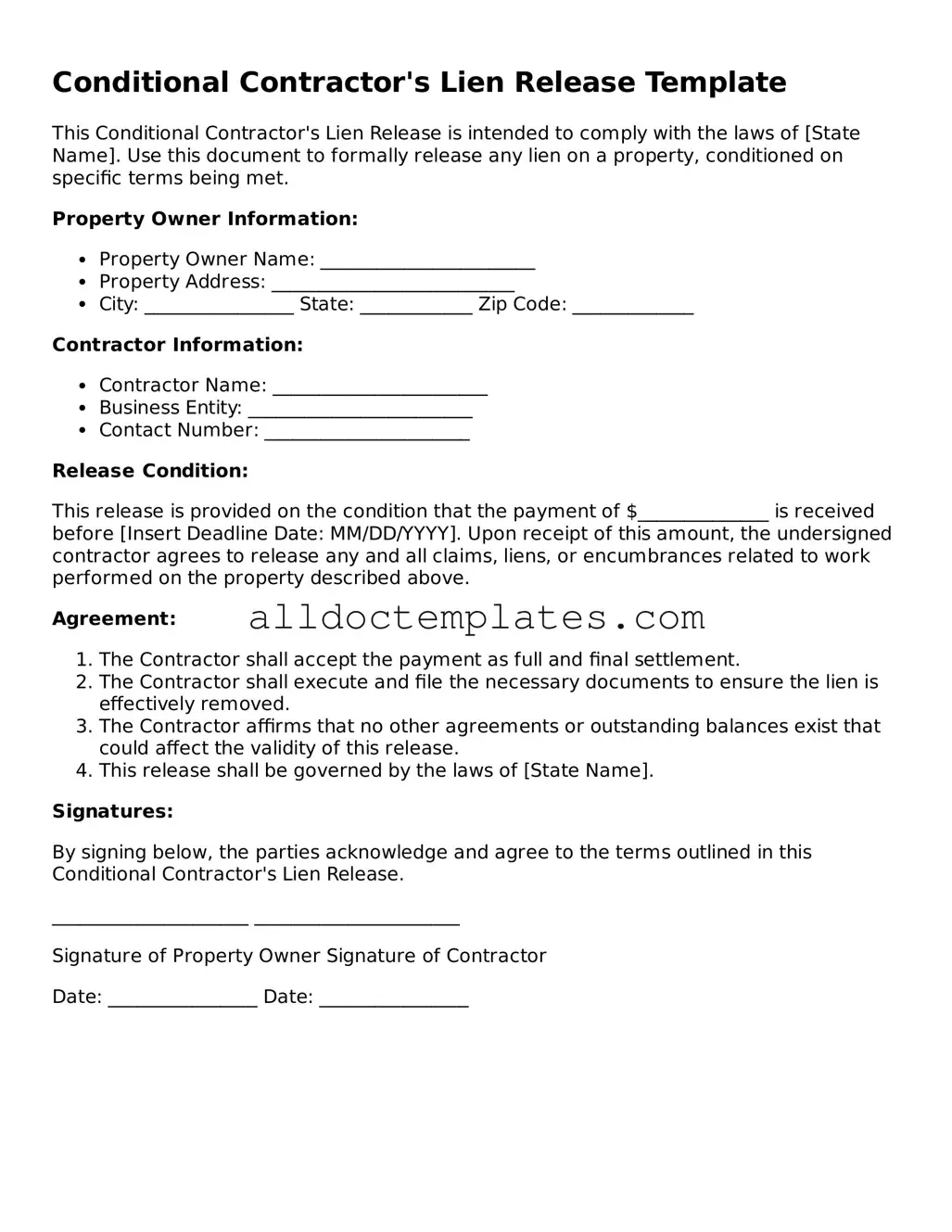Conditional Contractor's Lien Release Template
This Conditional Contractor's Lien Release is intended to comply with the laws of [State Name]. Use this document to formally release any lien on a property, conditioned on specific terms being met.
Property Owner Information:
- Property Owner Name: _______________________
- Property Address: __________________________
- City: ________________ State: ____________ Zip Code: _____________
Contractor Information:
- Contractor Name: _______________________
- Business Entity: ________________________
- Contact Number: ______________________
Release Condition:
This release is provided on the condition that the payment of $______________ is received before [Insert Deadline Date: MM/DD/YYYY]. Upon receipt of this amount, the undersigned contractor agrees to release any and all claims, liens, or encumbrances related to work performed on the property described above.
Agreement:
- The Contractor shall accept the payment as full and final settlement.
- The Contractor shall execute and file the necessary documents to ensure the lien is effectively removed.
- The Contractor affirms that no other agreements or outstanding balances exist that could affect the validity of this release.
- This release shall be governed by the laws of [State Name].
Signatures:
By signing below, the parties acknowledge and agree to the terms outlined in this Conditional Contractor's Lien Release.
_____________________ ______________________
Signature of Property Owner Signature of Contractor
Date: ________________ Date: ________________
